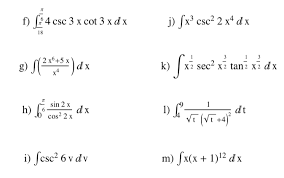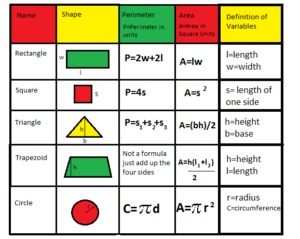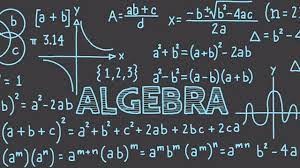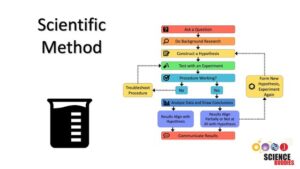By Study Rhino
Physics is all around us. From the way your smartphone works to why the sky is blue, physics helps explain the laws of nature that govern the universe. As a branch of science, physics focuses on understanding matter, energy, motion, and how they all interact. For beginners, physics can seem intimidating with its formulas and theories, but once broken down, it’s a fascinating and logical subject. In this guide, we’ll cover the core concepts of physics and how they relate to everyday life.
1. What is Physics?
At its heart, physics is the study of the fundamental principles that govern the natural world. It seeks to understand how and why things move, how energy is transferred, and how forces interact. Physicists ask questions like:
Why do objects fall?
How does electricity work?
What causes light and sound?
These questions may sound simple, but their answers reveal the workings of everything from atoms to galaxies.
2. Branches of Physics
Physics is a vast field and is divided into several sub-disciplines:
a) Classical Physics
This includes Newtonian mechanics, thermodynamics, and electromagnetism. It deals with macroscopic objects that we can see and touch.
b) Modern Physics
It involves quantum mechanics and relativity, studying the behavior of matter and energy on atomic and subatomic scales.
c) Astrophysics
Focuses on the physics of the universe, stars, planets, and galaxies.
d) Nuclear Physics
Studies the components and behavior of atomic nuclei.
e) Applied Physics
Bridges physics with technology and engineering, leading to innovations like lasers, medical imaging, and semiconductors.
3. Fundamental Concepts in Physics
Here are the basic building blocks of physics every beginner should understand:
a) Matter
Everything in the universe is made up of matter, which has mass and occupies space. Matter exists in different states: solid, liquid, gas, and plasma.
b) Energy
Energy is the capacity to do work. It comes in various forms: kinetic (movement), potential (stored), thermal, chemical, and nuclear.
c) Force
A force is a push or pull that can change the motion of an object. It’s measured in Newtons (N) and can cause acceleration, deformation, or a change in direction.
d) Motion
Motion refers to the change in position of an object over time. Physics studies how and why things move using concepts like velocity, acceleration, and momentum.
e) Space and Time
Space is the three-dimensional arena in which objects and events exist. Time is the ongoing sequence of events from the past to the present and into the future. Together, space and time form the foundation of Einstein’s theory of relativity.
4. The Laws of Motion
One of the most famous names in physics is Sir Isaac Newton, who formulated three fundamental laws of motion:
Newton’s First Law (Law of Inertia)
An object remains at rest or in uniform motion unless acted upon by an external force.
Example: A soccer ball stays still until someone kicks it.
Newton’s Second Law
Force equals mass times acceleration (F = ma).
Example: Pushing a heavy cart requires more force than pushing a light one.
Newton’s Third Law
For every action, there is an equal and opposite reaction.
Example: When you jump, your legs push down on the ground, and the ground pushes you up.
5. Work, Power, and Energy
a) Work
Work is done when a force is applied to an object, and it moves in the direction of the force. It’s calculated by the formula: Work (W) = Force × Distance
b) Power
Power is the rate at which work is done: Power = Work / Time
c) Energy
Energy is conserved, meaning it cannot be created or destroyed—only transformed from one form to another. This is the principle of conservation of energy.
6. Heat and Thermodynamics
Thermodynamics is the study of heat and temperature and their relationship to energy and work.
Laws of Thermodynamics:
First Law – Energy cannot be created or destroyed.
Second Law – Entropy (disorder) in a closed system always increases.
Third Law – As temperature approaches absolute zero, the entropy of a system approaches a constant minimum.
Applications: Engines, refrigerators, and weather systems rely on thermodynamics.
7. Waves and Sound
A wave is a disturbance that transfers energy from one place to another. Waves can be mechanical (require a medium, like sound) or electromagnetic (don’t require a medium, like light).
Key Wave Properties:
Amplitude – Height of the wave.
Frequency – How many waves pass a point per second (measured in Hertz, Hz).
Wavelength – Distance between two peaks.
Sound is a mechanical wave produced by vibrating objects and transmitted through a medium like air or water.
8. Light and Optics
Light is a form of electromagnetic radiation visible to the human eye. It travels in waves and can reflect, refract, and diffract.
Important Light Behaviors:
Reflection – Bouncing off surfaces.
Refraction – Bending of light as it passes through different media.
Diffraction – Spreading of light as it passes through narrow openings.
Optics is the study of how light interacts with objects and lenses—used in glasses, cameras, and telescopes.
9. Electricity and Magnetism
Electricity and magnetism are closely related fields studied under electromagnetism.
a) Electric Current
The flow of electric charge, typically through a wire. Measured in amperes (A).
b) Voltage
The potential difference that pushes electric current through a circuit.
c) Resistance
The opposition to the flow of electric current. Measured in ohms (Ω).
d) Ohm’s Law
V = I × R
(Voltage = Current × Resistance)
e) Magnetism
Moving electric charges produce magnetic fields. This principle is used in motors, generators, and transformers.
10. Modern Physics: Quantum and Relativity
a) Quantum Physics
Deals with particles at the atomic and subatomic level. It introduces concepts like:
Wave-particle duality – Particles like electrons can act like both particles and waves.
Uncertainty Principle – You can’t simultaneously know a particle’s position and momentum with absolute certainty.
b) Relativity
Albert Einstein’s Theory of Relativity transformed our understanding of space and time.
Special Relativity: As objects move closer to the speed of light, time slows down and mass increases.
General Relativity: Gravity is the warping of space-time by massive objects.
11. Simple Machines
Simple machines make work easier by multiplying force or changing its direction. Examples include:
Lever
Inclined Plane
Pulley
Wheel and Axle
Screw
Wedge
These tools are the foundation of more complex machines and are widely used in engineering and construction.
12. Real-Life Applications of Physics
Physics isn’t just about theoretical problems—it has real-world applications everywhere:
Medical Imaging (X-rays, MRI, ultrasound)
Transportation (cars, planes, trains)
Communication (radio, television, internet)
Energy Production (solar panels, nuclear reactors)
Technology (smartphones, computers, GPS)
Understanding physics helps innovate, improve safety, and enhance daily life.
13. Tips for Studying Physics
Understand the Concepts First: Don’t just memorize formulas—know why they work.
Practice Problems: Physics is problem-solving heavy. Practice helps reinforce understanding.
Visualize Problems: Use diagrams and sketches.
Relate to Real Life: Link theories to everyday experiences.
Use Online Resources: Simulations and videos can bring abstract ideas to life.
Final Thoughts
Physics is a gateway to understanding the world and the universe. From the tiniest particle to the largest galaxy, physics helps us make sense of everything around us. While it may seem complex at first, starting with the basics builds a strong foundation. As you explore more, you’ll find that physics not only explains how things work—but why they’re truly amazing.
Whether you’re a curious student or just beginning your scientific journey, keep asking questions, keep experimenting, and keep learning. Because at Study Rhino, we believe that every curious mind deserves a solid start.




